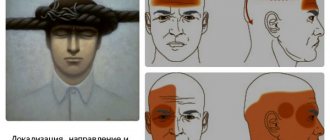Posted on Sep 2nd, 2019
by Olya
Categories:
- Dependencies
Benzodiazepines are a group of medications that have a sleeping pill, sedative effect, and relieve seizures. The drug is used for people with sleep disturbances, anxiety and restlessness. Many drugs in this group are tranquilizers, hypnotics, but are included in the general group of central nervous system depressants.
If used correctly, the products do not cause side effects. Drugs from the benzodiazepine group are often used in neurology. It is important to know the mechanism of action of benzodiazepines and the occurrence of dependence on pills.
When are benzodiazepines used?
The group of drugs was synthesized in 1957. As many studies have shown, medications have a positive effect on the body in various disorders, but with prolonged use, the effectiveness decreases and a number of side effects appear.
Chemical formula of benzodiazepine
Also, research has established that addiction to benzodiazepines occurs; after completely quitting the pills, withdrawal syndrome appears. Today, 29 drugs included in this group are produced and used in Europe.
Benzodiazepines are psychoactive elements that affect the nervous system; after use, anxiety is relieved and the nervous system relaxes, patients quickly want to sleep.
In medical practice, benzodiazepines are used, the action of which is aimed at the following conditions:
- Epilepsy.
- Insomnia and other sleep disorders.
- Anxiety and fears.
- Muscle spasms.
The mechanism of action of benzodiazepines is such that they are often used to treat drug addicts who have used:
- Opiates.
- Amphetamines.
- Hallucinogenic drugs.
Benzodiazepines are also used to reduce panic. It is worth noting that medications of this group are used for drug addiction, although they themselves have a narcotic effect. Addicted people use drugs not for treatment, but to obtain euphoria and a buzz from taking them.
Diazepam is included in the list of benzodiazepine drugs
It is this group of drugs that has become a replacement for barbiturates. True, after the 1980s, drugs were found to have many side effects, including brain damage and addiction. Therefore, since that time, any drugs have been sold only by prescription, in limited quantities.
List of drugs
There are several drugs that are often used by drug addicts.
List of benzodiazepine drugs:
- Nordiazepam.
- Diazepam.
- Phenazepam.
- Librius.
- Xanax.
- Serax.
Doctors often prescribe pills included in the described group to treat the nervous system, but after therapy, some patients use the medications for other purposes than for their intended purpose, but to get a high. As a rule, drug addicts falsify prescriptions.
Mechanism of action of benzodiazepine
Benzodiazepines are able to interact with GABA receptors, increasing the affinity of gamma-aminobutyric acid for these receptors, thereby reducing neuronal excitability and central nervous system function.
Benzodiazepine relieves anxiety and relaxes the nervous system
After taking it, not only a therapeutic effect appears, but also other actions.
The effect of using benzodiazepines is as follows:
- The feeling of anxiety is reduced.
- Complete calm appears.
- Peace sets in.
- Pain and sensitivity to it disappear.
- Attentiveness deteriorates.
- Complete relaxation, contentment.
- Serenity.
Depending on the dosage taken, the effect may be different:
- Sedative.
- Relieving anxiety.
- Relaxing.
- Hypnotic.
To obtain the desired effect, drug addicts use a dosage 2-3 times higher than needed to obtain a therapeutic effect. This can cause not only a certain result, but also benzodiazepine poisoning and overdose.
As a rule, when using several tablets at once, a person simply falls asleep, and after waking up many unpleasant sensations and consequences appear. Active substances are retained in the blood for different periods of time, depending on the individual characteristics of the body. Half-life from the blood requires 1-100 hours. The substances will remain in the urine for 1-7 days.
Drug abuse
Medicines are available in tablet form for oral use, and the effect can be enhanced by using powder.
Benzodiazepines are quickly addictive
Doctors in a hospital setting can administer injections. When the active substances influence the nervous system, the desired effect appears, which is very reminiscent of alcohol intoxication, but there is no smell.
Symptoms of addiction
Benzodiazepines cause addiction quickly, and if the patient abuses such pills, the symptoms will be as follows:
- Disruptions in speech, it becomes difficult to understand.
- Lost in space and time.
- Dizziness.
- Drowsiness.
- Failures in concentration.
- Decreased appetite.
- Nausea.
- Visual impairment.
- In rare cases, seizures.
- Rave.
- Nightmares while sleeping.
If benzodiazepines are used frequently, a person becomes depressed, patients' libido worsens, and men lose their erections. After stopping the drugs, your head may begin to hurt, and your mood will be depressed. Injectable benzodiazepines can lower blood pressure and impair breathing.
Poisoning and overdose
Many side effects are caused by the fact that the drugs have a relaxing and sedative effect. Drug addicts have a severe loss of concentration, which can cause severe injuries. The condition will worsen due to dizziness and drowsiness. If you drive a car in this condition, the risk of an accident, with disastrous consequences, increases.
Addiction
Even use in a therapeutic dosage, but organized for a long time, can provoke the development of dependence on benzodiazepines. It has been proven that these drugs provoke both mental and physical dependence, but to a relatively low degree (for barbiturates and opiates it is much higher). Dependence is easily provable, since after discontinuation of the drug a number of symptoms arise from the body and internal organs, as well as from the psyche.
When taking benzodiazepines in a standard dosage, dependence develops, on average, after 4-6 months, even when it comes to weak-acting drugs. But few people become truly addicted if they did not initially intend to use the drug to obtain a narcotic effect.
But drug addicts who use large dosages, and especially those who have previously had experience using other psychoactive substances, become heavily addicted to bendiazepines within 2-3 months. According to statistics, up to 50% of drug addicts undergoing therapy are simultaneously dependent on this group of drugs.
History of discovery
Benzodiazepines were discovered by Leo Sternbach while working at Hoffman La Roche in New Jersey. In 1957, he discovered that the parent compound had hypnotic, anxiolytic, and muscle relaxant effects. The first drug in this group, Chlordiazepoxide (Librium), was released in the UK in 1960, followed by Diazepam in 1963.
By the end of the 1970s, benzodiazepines became widely used in neurological practice. It is estimated that one in five women and one in ten men in Europe have taken them every year, for some time. The medications were taken long-term, often for many years, especially to treat anxiety, depression, insomnia and stress.
But already in the early 1980s, in England, after long-term use, some patients began to note that the benzodiazepine was losing its effectiveness and side effects were observed. Patients found it difficult to stop taking benzodiazepines due to withdrawal symptoms, and many complained of dependence. Doctors and authorities have tightened control over the release of group drugs from pharmacies.
Currently, 29 benzodiazepine tranquilizers are produced in Europe and the USA.
Serotonin tranquilizer
The drug from the second subgroup is a serotonin receptor agonist - Buspirone or Spitomin. It is able to bind to serotonin and dopamine receptors. The main effect, like that of benzodiazepine tranquilizers, is anxiolytic.
It develops more slowly, over two weeks. Buspirone does not have sedative, hypnotic and muscle relaxant effects.
In the body, the drug also binds to plasma proteins. All its metabolism occurs in the liver, and the substance is released in the form of metabolites through the kidneys.
Indicated for the treatment of various anxiety conditions and neuroses. Contraindications to taking the drug include conditions such as pregnancy and breastfeeding, severe pathology of the heart, liver and kidneys.
The initial dose for treatment is 15 mg per day, divided into three doses. If necessary, the dose can be increased to 25 mg.
Pharmacological properties
Benzodiazepine tranquilizers act as positive allosteric modulators on gamma receptors.
Mechanism of action of benzodiazepines (clickable)
aminobutyric acid (GABA). It is a ligand-gated chloride-selective ion channel. GABA is the most abundant neurotransmitter in the central nervous system and is found in high concentrations in the cortex and limbic system.
It is inhibitory in nature and thus reduces the excitability of neurons. GABA has a calming effect on the brain.
The pharmacokinetic properties of a drug are determined by the onset and duration of its action.
Benzodiazepines can be administered intramuscularly, intravenously, orally, intranasally, or rectally.
From a pharmacological point of view, the drug is well absorbed by the gastrointestinal tract after oral administration. After intravenous administration, its effect quickly spreads to the brain and central nervous system.
"Klobazam"
"Clobazam" belongs to the benzodiazepines with anticonvulsant action. The drug is sold in tablets that have a sedative and anticonvulsant effect. For patients of the adult age category, the daily dosage is from 20 to 30 mg, and for children over three years old, half of this norm should be used.
Research and practical evaluation
Western scientists are studying the necessity and safety of using benzodiazepines. The American Psychiatric Association does not classify these medications as first-line treatments for anxiety and sleep disorders.
Russian psychiatrist A.B. Smulevich devoted his research to the topic of addiction. He notes that the use of benzodiazepine derivatives in short courses of 3 to 6 weeks does not cause physical dependence.
According to his data, about 60% of patients who used drugs for a longer period experienced severe withdrawal symptoms upon abrupt withdrawal.
The main advantage of tranquilizers of this group is their ability to quickly suppress the symptoms of neurological disorders. If the dosage is observed and the period of use is short, there are practically no side effects. The low cost of the drugs is another advantage.
If the rules of administration are violated, a number of side effects may occur, and with prolonged use, addiction develops. In case of abrupt refusal to take medications, withdrawal syndrome occurs.
What's next?
In order to determine whether benzodiazepines can be considered as drugs for panic attacks along with SSRIs, higher quality and longer studies are needed that, along with the effectiveness of the treatment itself, would consider the risk of withdrawal and pharmacological dependence.
In preparing the article, data from the Cochrane systematic review “Benzodiazepines versus placebo for panic disorder in adults” were used, authors: J. Breilmann, F. Girlanda, G. Guaiana, C. Barbui, A. Cipriani, M. Castellazzi, I. Bighelli, S J. C. Davies, T. A Furukawa, M. Koesters.
Golden twenty: indications and dosages
Modern benzodiazepines are widely used in neurology and other areas of medicine; we offer a list of the TOP 20 most popular drugs at the moment:
- Midazolam;
- Gidazepam;
- Diazepam;
- Clonazepam;
- Clobazam;
- Lorazepam;
- Clorazapat;
- Chlordiazepoxide;
- Phenazepam;
- Gidazepam;
- Alprazolam;
- Bromazepam.
- Loprazolam;
- Flunitrazepam;
- Temazepam;
- Flurazepam;
- Midazolam;
- Nimetazepam;
- Triazolam;
- Nitrazepam.
Let us examine in more detail the purposes of use, features of the course of treatment and recommended dosages of each benzodiazepine from the list:
- Midazolamprescribed for the treatment of insomnia and relief of acute epileptic seizures. It is administered intravenously and the use of benzodiazepines is not recommended during pregnancy and lactation. While pregnant, the risk of developing a congenital cleft palate increases.
During breastfeeding, it is forbidden to use drugs of this group, because. they can enter the child’s body along with mother’s milk and cause drowsiness and slow reaction.
Elderly people are at particular risk. They are more difficult to tolerate possible side effects. Their risk of addiction is much higher.
Medicines should be stopped if the following symptoms appear:
Benzodiazepine poisoning occurs when a person does not adhere to the recommended dosage or combines a sedative with other substances.
- troubled breathing or stopping;
- blueness of nails and lips;
- confusion and disorientation;
- dizziness;
- blurred vision or double vision;
- weakness;
- uncoordinated muscle movements;
- nervousness;
- stupor.
Benzodiazepines: list of drugs for panic attacks that have been used in studies
Only randomized, blinded, controlled trials were included in the review, i.e. those in which participants were randomly assigned to groups and did not know which treatment they were receiving (the “blind” design of the study also means that medical staff do not know). Twenty-four studies involving 4233 patients met the selection criteria. List of benzodiazepine drugs that were used for panic attacks in the studies selected for analysis:
- alprazolam;
- diazepam;
- clonazepam;
- adinazolam;
- Etizolam.
Side effects
Due to the hypnotic effect, the patient loses concentration, which often provokes injuries and falls. It is important to stop driving, otherwise this could cause an accident.
Long-term use not only provokes addiction, but also affects health. Problems with vision, intestines, liver, and sexual life appear. Suicidal thoughts may begin to appear.
Unclassified drugs
The third group includes several tranquilizers that cannot be classified.
Amizil
The drug Amizil is a centrally acting anticholinergic blocker. Its main effect is sedative. It is associated with the suppression of m-cholinergic receptors located in the brain.
The medication also has an anticonvulsant effect and is capable of inhibiting the cough center in the medulla oblongata.
Hydroxyzine (Atarax)
Hydroxyzine, or Atarax, is a derivative of diphenylmethane. This is one of the oldest tranquilizers that has not lost its effectiveness to this day. The anxiolytic effect is moderate. This drug also has other effects:
- soothing;
- antiemetic;
- antihistamine.
The drug is able to penetrate the biological barriers of the body. Metabolism occurs in the liver, the main metabolite is cetirizine, a strong antihistamine.
Atarax is indicated for the following pathological conditions:
- severe anxiety;
- neurological and mental disorders accompanied by internal tension and emotional instability;
- in the treatment of chronic alcoholism.
The drug is contraindicated during pregnancy and breastfeeding, if you are intolerant of Hydroxyzine itself or its metabolites. The therapeutic dose ranges from 25 to 100 mg, divided into several doses throughout the day.
Effect
Benzodiazepines are a special medicine that have the following effects:
- reducing anxiety;
- pacification;
- pain reduction;
- relaxation;
- serenity;
- feeling of lightness.
The duration and strength of the effect depends on the dose. However, it is important to strictly adhere to it, otherwise an overdose may occur. Benzodiazepine poisoning is common and can lead to serious consequences.
Benzodiazepines have a strong effect that lasts a long time. The presence of the drug can be detected even after a few days. According to experts, it persists in urine for up to one week.












